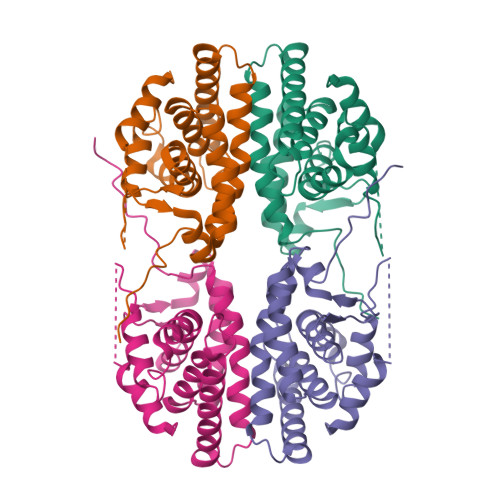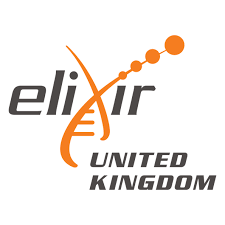Retinoid X receptor-γ
Target id: 612
Nomenclature: Retinoid X receptor-γ
Systematic Nomenclature: NR2B3
Family: 2B. Retinoid X receptors
Contents:
- Gene and Protein Information
- Previous and Unofficial Names
- Database Links
- Selected 3D Structures
- Natural/Endogenous Ligands
- Agonists
- Antagonists
- DNA Binding
- Co-binding Partners
- Main Co-regulators
- Tissue Distribution
- Physiological Consequences of Altering Gene Expression
- Phenotypes, Alleles and Disease Models
- References
- How to cite this page
Gene and Protein Information  |
|||||
| Species | AA | Chromosomal Location | Gene Symbol | Gene Name | Reference |
| Human | 463 | 1q23.3 | RXRG | retinoid X receptor gamma | 2,23 |
| Mouse | 463 | 1 74.99 cM | Rxrg | retinoid X receptor gamma | 14,19-20,23 |
| Rat | 463 | 13q24 | Rxrg | retinoid X receptor gamma | 3 |
Previous and Unofficial Names  |
| nuclear receptor subfamily 2 group B member 3 | retinoic acid receptor RXR-gamma | retinoid X receptor, gamma | RXRγ |
Database Links  |
|
| Alphafold | P48443 (Hs), P28705 (Mm), Q5BJR8 (Rn) |
| CATH/Gene3D | 3.30.50.10 |
| ChEMBL Target | CHEMBL2004 (Hs), CHEMBL4402 (Mm), CHEMBL4277 (Rn) |
| DrugBank Target | P48443 (Hs) |
| Ensembl Gene | ENSG00000143171 (Hs), ENSMUSG00000015843 (Mm), ENSRNOG00000004537 (Rn) |
| Entrez Gene | 6258 (Hs), 20183 (Mm), 83574 (Rn) |
| Human Protein Atlas | ENSG00000143171 (Hs) |
| KEGG Gene | hsa:6258 (Hs), mmu:20183 (Mm), rno:83574 (Rn) |
| OMIM | 180247 (Hs) |
| Pharos | P48443 (Hs) |
| RefSeq Nucleotide | NM_006917 (Hs), NM_001159731 (Mm), NM_009107 (Mm), NM_031765 (Rn) |
| RefSeq Protein | NP_008848 (Hs), NP_001153203 (Mm), NP_033133 (Mm), NP_113953 (Rn) |
| UniProtKB | P48443 (Hs), P28705 (Mm), Q5BJR8 (Rn) |
| Wikipedia | RXRG (Hs) |
Selected 3D Structures  |
|||||||||||

|
|
||||||||||
Natural/Endogenous Ligands  |
| alitretinoin |
Download all structure-activity data for this target as a CSV file 
Agonists  |
|||||||||||||||||||||||||||||||||||||||||||||||||||||||||||||||||||||||||||||||||||||||||||||||||||||||||||||||||||||||||||||||||||||||||||||||||||||||||||||||||||||||||||||||||||||||||||||||||||||||||||||||||||
| Key to terms and symbols | View all chemical structures | Click column headers to sort | |||||||||||||||||||||||||||||||||||||||||||||||||||||||||||||||||||||||||||||||||||||||||||||||||||||||||||||||||||||||||||||||||||||||||||||||||||||||||||||||||||||||||||||||||||||||||||||||||||||||||||||||||
|
|||||||||||||||||||||||||||||||||||||||||||||||||||||||||||||||||||||||||||||||||||||||||||||||||||||||||||||||||||||||||||||||||||||||||||||||||||||||||||||||||||||||||||||||||||||||||||||||||||||||||||||||||||
| View species-specific agonist tables | |||||||||||||||||||||||||||||||||||||||||||||||||||||||||||||||||||||||||||||||||||||||||||||||||||||||||||||||||||||||||||||||||||||||||||||||||||||||||||||||||||||||||||||||||||||||||||||||||||||||||||||||||||
Antagonists  |
|||||||||||||||||||||||||||||||||||||||||||||||||||
| Key to terms and symbols | View all chemical structures | Click column headers to sort | |||||||||||||||||||||||||||||||||||||||||||||||||
|
|||||||||||||||||||||||||||||||||||||||||||||||||||
| Name | Interaction | Effect | Reference |
| Co-binding Partners Comments | |||
| Binding partners are the same as RXRα. | |||
Main Co-regulators  |
||||||
| Name | Activity | Specific | Ligand dependent | AF-2 dependent | Comments | References |
| NCOA1 | Co-activator | No | Yes | Yes | 18,26,28 | |
| NCOA2 | Co-activator | No | Yes | Yes | 18,30-31 | |
| NCOA3 | Co-activator | No | Yes | Yes | 8,18,26 | |
Tissue Distribution 
|
||||||||
|
||||||||
| Tissue Distribution Comments | ||||||||
| RXRγ displays the highest restricted expression pattern of the three RXRs.The RXRγ1 isoform is expressed in brain and muscle, whereas RXRγ2 is highly expressed in both cardiac and skeletal muscles. Similar expression pattern observed in the rat. | ||||||||
Physiological Consequences of Altering Gene Expression 
|
||||||||||
|
Phenotypes, Alleles and Disease Models 
|
Mouse data from MGI | ||||||||||||||||||||||||||||||||||||||||||
|
|||||||||||||||||||||||||||||||||||||||||||
References
1. Allenby G, Bocquel MT, Saunders M, Kazmer S, Speck J, Rosenberger M, Lovey A, Kastner P, Grippo JF, Chambon P. (1993) Retinoic acid receptors and retinoid X receptors: interactions with endogenous retinoic acids. Proc Natl Acad Sci USA, 90 (1): 30-4. [PMID:8380496]
2. Almasan A, Mangelsdorf DJ, Ong ES, Wahl GM, Evans RM. (1994) Chromosomal localization of the human retinoid X receptors. Genomics, 20 (3): 397-403. [PMID:8034312]
3. Belanger AJ, Luo Z, Vincent KA, Akita GY, Cheng SH, Gregory RJ, Jiang C. (2007) Hypoxia-inducible factor 1 mediates hypoxia-induced cardiomyocyte lipid accumulation by reducing the DNA binding activity of peroxisome proliferator-activated receptor alpha/retinoid X receptor. Biochem Biophys Res Commun, 364 (3): 567-72. [PMID:17963722]
4. Boehm MF, McClurg MR, Pathirana C, Mangelsdorf D, White SK, Hebert J, Winn D, Goldman ME, Heyman RA. (1994) Synthesis of high specific activity [3H]-9-cis-retinoic acid and its application for identifying retinoids with unusual binding properties. J Med Chem, 37 (3): 408-14. [PMID:8308867]
5. Boehm MF, Zhang L, Badea BA, White SK, Mais DE, Berger E, Suto CM, Goldman ME, Heyman RA. (1994) Synthesis and structure-activity relationships of novel retinoid X receptor-selective retinoids. J Med Chem, 37 (18): 2930-41. [PMID:8071941]
6. Brown NS, Smart A, Sharma V, Brinkmeier ML, Greenlee L, Camper SA, Jensen DR, Eckel RH, Krezel W, Chambon P, Haugen BR. (2000) Thyroid hormone resistance and increased metabolic rate in the RXR-gamma-deficient mouse. J Clin Invest, 106 (1): 73-9. [PMID:10880050]
7. Canan Koch SS, Dardashti LJ, Cesario RM, Croston GE, Boehm MF, Heyman RA, Nadzan AM. (1999) Synthesis of retinoid X receptor-specific ligands that are potent inducers of adipogenesis in 3T3-L1 cells. J Med Chem, 42 (4): 742-50. [PMID:10052980]
8. Chen H, Lin RJ, Schiltz RL, Chakravarti D, Nash A, Nagy L, Privalsky ML, Nakatani Y, Evans RM. (1997) Nuclear receptor coactivator ACTR is a novel histone acetyltransferase and forms a multimeric activation complex with P/CAF and CBP/p300. Cell, 90 (3): 569-80. [PMID:9267036]
9. Chiang MY, Misner D, Kempermann G, Schikorski T, Giguère V, Sucov HM, Gage FH, Stevens CF, Evans RM. (1998) An essential role for retinoid receptors RARbeta and RXRgamma in long-term potentiation and depression. Neuron, 21 (6): 1353-61. [PMID:9883728]
10. Dollé P, Fraulob V, Kastner P, Chambon P. (1994) Developmental expression of murine retinoid X receptor (RXR) genes. Mech Dev, 45 (2): 91-104. [PMID:8199055]
11. Haugen BR, Brown NS, Wood WM, Gordon DF, Ridgway EC. (1997) The thyrotrope-restricted isoform of the retinoid-X receptor-gamma1 mediates 9-cis-retinoic acid suppression of thyrotropin-beta promoter activity. Mol Endocrinol, 11 (4): 481-9. [PMID:9092800]
12. Heitel P, Gellrich L, Kalinowsky L, Heering J, Kaiser A, Ohrndorf J, Proschak E, Merk D. (2019) Computer-Assisted Discovery and Structural Optimization of a Novel Retinoid X Receptor Agonist Chemotype. ACS Med Chem Lett, 10 (2): 203-208. DOI: 10.1021/acsmedchemlett.8b00551 [PMID:30783504]
13. Heyman RA, Mangelsdorf DJ, Dyck JA, Stein RB, Eichele G, Evans RM, Thaller C. (1992) 9-cis retinoic acid is a high affinity ligand for the retinoid X receptor. Cell, 68 (2): 397-406. [PMID:1310260]
14. Hoopes CW, Taketo M, Ozato K, Liu Q, Howard TA, Linney E, Seldin MF. (1992) Mapping of the mouse Rxr loci encoding nuclear retinoid X receptors RXR alpha, RXR beta, and RXR gamma. Genomics, 14 (3): 611-7. [PMID:1358808]
15. Krezel W, Dupé V, Mark M, Dierich A, Kastner P, Chambon P. (1996) RXR gamma null mice are apparently normal and compound RXR alpha +/-/RXR beta -/-/RXR gamma -/- mutant mice are viable. Proc Natl Acad Sci USA, 93 (17): 9010-4. [PMID:8799145]
16. Krezel W, Ghyselinck N, Samad TA, Dupé V, Kastner P, Borrelli E, Chambon P. (1998) Impaired locomotion and dopamine signaling in retinoid receptor mutant mice. Science, 279 (5352): 863-7. [PMID:9452386]
17. Lala DS, Mukherjee R, Schulman IG, Koch SS, Dardashti LJ, Nadzan AM, Croston GE, Evans RM, Heyman RA. (1996) Activation of specific RXR heterodimers by an antagonist of RXR homodimers. Nature, 383 (6599): 450-3. [PMID:8837780]
18. Laudet V, Gronemeyer H. (2002) The Nuclear Receptor Facts Book. In The Nuclear Receptor Facts Book. (Academic Press) .
19. Leid M, Kastner P, Chambon P. (1992) Multiplicity generates diversity in the retinoic acid signalling pathways. Trends Biochem Sci, 17 (10): 427-33. [PMID:1333659]
20. Leid M, Kastner P, Lyons R, Nakshatri H, Saunders M, Zacharewski T, Chen JY, Staub A, Garnier JM, Mader S. (1992) Purification, cloning, and RXR identity of the HeLa cell factor with which RAR or TR heterodimerizes to bind target sequences efficiently. Cell, 68 (2): 377-95. [PMID:1310259]
21. Levin AA, Sturzenbecker LJ, Kazmer S, Bosakowski T, Huselton C, Allenby G, Speck J, Kratzeisen C, Rosenberger M, Lovey A. (1992) 9-cis retinoic acid stereoisomer binds and activates the nuclear receptor RXR alpha. Nature, 355 (6358): 359-61. [PMID:1309942]
22. Liu Q, Linney E. (1993) The mouse retinoid-X receptor-gamma gene: genomic organization and evidence for functional isoforms. Mol Endocrinol, 7 (5): 651-8. [PMID:8391126]
23. Mangelsdorf DJ, Borgmeyer U, Heyman RA, Zhou JY, Ong ES, Oro AE, Kakizuka A, Evans RM. (1992) Characterization of three RXR genes that mediate the action of 9-cis retinoic acid. Genes Dev, 6 (3): 329-44. [PMID:1312497]
24. Mark M, Chambon P. (2003) Functions of RARs and RXRs in vivo: genetic dissection of the retinoid signaling pathway. Pure Appl Chem, 75: 1709-1732.
25. Mark M, Ghyselinck NB, Chambon P. (2006) Function of retinoid nuclear receptors: lessons from genetic and pharmacological dissections of the retinoic acid signaling pathway during mouse embryogenesis. Annu Rev Pharmacol Toxicol, 46: 451-80. [PMID:16402912]
26. McKenna NJ, Lanz RB, O'Malley BW. (1999) Nuclear receptor coregulators: cellular and molecular biology. Endocr Rev, 20 (3): 321-44. [PMID:10368774]
27. Nagy L, Thomázy VA, Shipley GL, Fésüs L, Lamph W, Heyman RA, Chandraratna RA, Davies PJ. (1995) Activation of retinoid X receptors induces apoptosis in HL-60 cell lines. Mol Cell Biol, 15 (7): 3540-51. [PMID:7791761]
28. Oñate SA, Tsai SY, Tsai MJ, O'Malley BW. (1995) Sequence and characterization of a coactivator for the steroid hormone receptor superfamily. Science, 270 (5240): 1354-7. [PMID:7481822]
29. Thacher SM, Vasudevan J, Chandraratna RA. (2000) Therapeutic applications for ligands of retinoid receptors. Curr Pharm Des, 6 (1): 25-58. [PMID:10637371]
30. Voegel JJ, Heine MJ, Tini M, Vivat V, Chambon P, Gronemeyer H. (1998) The coactivator TIF2 contains three nuclear receptor-binding motifs and mediates transactivation through CBP binding-dependent and -independent pathways. EMBO J, 17 (2): 507-19. [PMID:9430642]
31. Voegel JJ, Heine MJ, Zechel C, Chambon P, Gronemeyer H. (1996) TIF2, a 160 kDa transcriptional mediator for the ligand-dependent activation function AF-2 of nuclear receptors. EMBO J, 15 (14): 3667-75. [PMID:8670870]
32. Vuligonda V, Thacher SM, Chandraratna RA. (2001) Enantioselective syntheses of potent retinoid X receptor ligands: differential biological activities of individual antipodes. J Med Chem, 44 (14): 2298-303. [PMID:11428923]
How to cite this page
2B. Retinoid X receptors: Retinoid X receptor-γ. Last modified on 23/04/2019. Accessed on 01/11/2024. IUPHAR/BPS Guide to PHARMACOLOGY, https://www.guidetomalariapharmacology.org/GRAC/ObjectDisplayForward?objectId=612.














